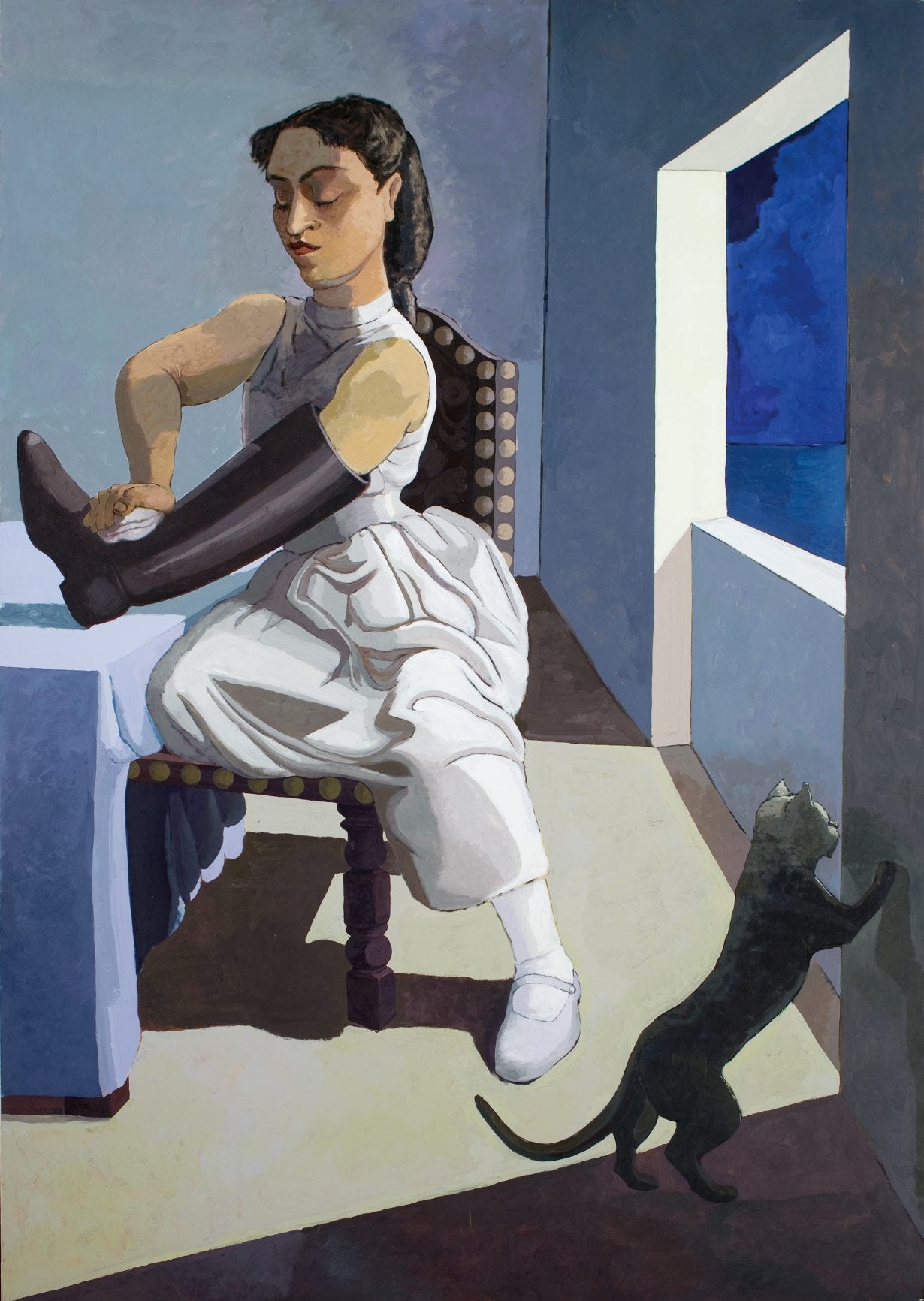“Human beings have always felt the need to create and to leave their mark; even on cave walls they did it. Great art reveals something about us. It’s the best we can do.” — Paula Rego
Dear Readers! This instalment of ‘5 things we can learn from…’ is dedicated to the formidable Portuguese artist, Paula Rego (1935–2022).
Born in Lisbon, Rego was one of the foremost painters of the late 20th and early 21st century, creating powerful, unsettling, narrative-driven pictures that defy all convention (in subject, scale and style).
I’ve gathered some wisdom from this trailblazing artist below. Read on!
1. Make a routine — with time for rest
Rego’s work days followed what sounds like the perfect routine. Age 79, in 2014, she described a typical day:
“Nowadays I try to start at 10.30 in the morning and carry on until 6.30 in the evening. I always have a rest after lunch. I’ve done that since I was a little girl growing up in Portugal. I eat two rice-cake sandwiches for lunch, full of salad, and a bit of ham or cheese, and an apple. I drink peppermint tea. When I have finished work for the day I enjoy one glass of champagne.”
2. Face your fears
Rego knew the power of art to help us process and exorcise demons — as she famously said, “I paint to give a face to fear”. When I spoke to her son, Nick Willing, on the GWA podcast, he told me that, as a kid, when he was scared or suffering, his mother would get him to draw fear — “she'd say to me, paint a picture of it. I want to see what it feels like.”
3. Enjoy your work
Rego insisted on the importance of maintaining a sense of play and enjoyment when it came to work. “After a bit you discover that you have to play” she said. “You’ve got to be able to enjoy yourself doing it—it’s not duty.”
4. Art can change things
Born in fascist Portugal, three years into Salazar’s dictatorship, Rego grew up in a time of extreme oppression for women. Her Untitled series (1998-9) depicts women undergoing unsafe abortions, and was created in the wake of Portugal’s failed referendum to legalise abortion, raising awareness for these dangerous procedures.
These images – full of truth, pain, and anguish – were used propagandistically during the successful referendum in 2007, to allow women access to safe abortions. The then-President stated they were key to having contributed to the outcome.
On the series, Rego commented:
“They were important. It was thrilling to do those pictures, because they were true. Not nice or polite, but true.”
Keep reading with a 7-day free trial
Subscribe to The Great Women Artists to keep reading this post and get 7 days of free access to the full post archives.








